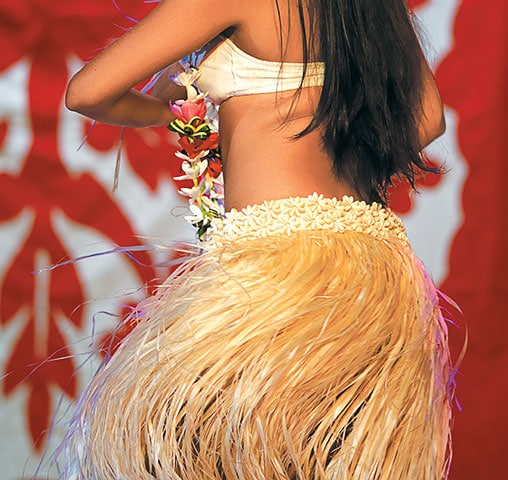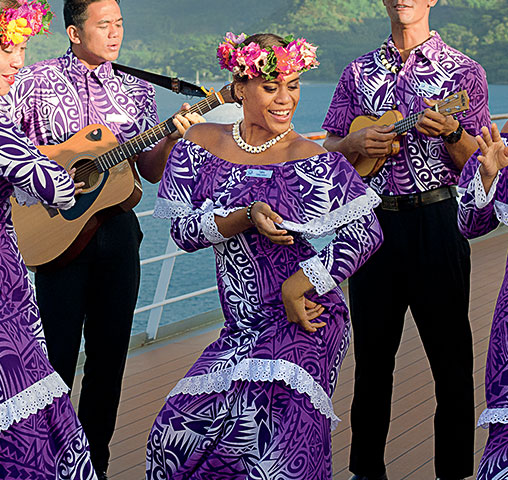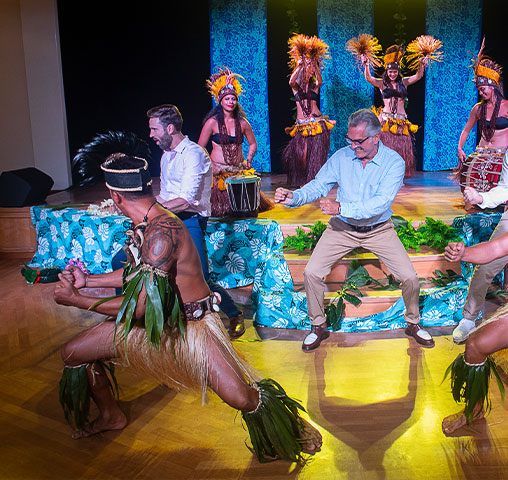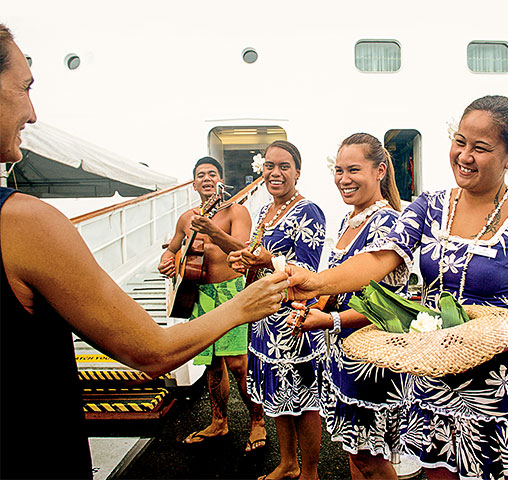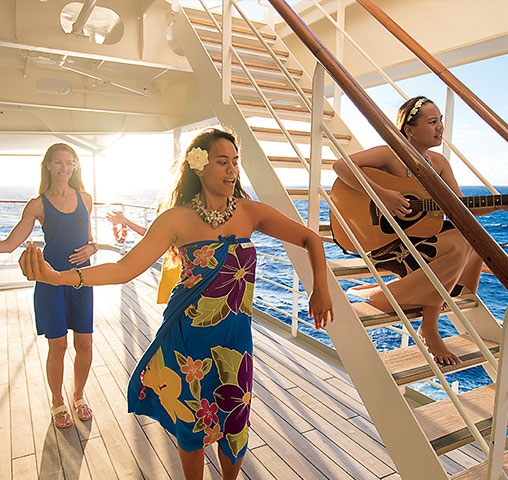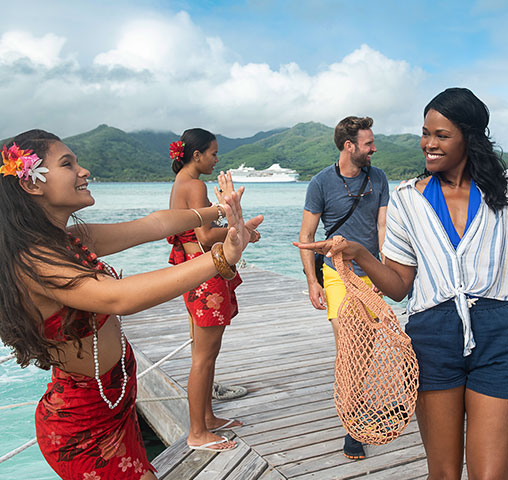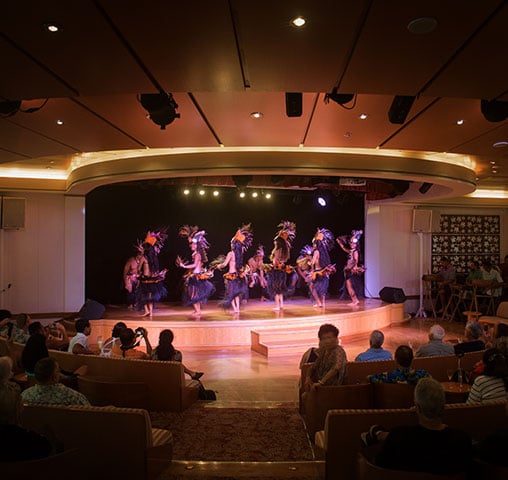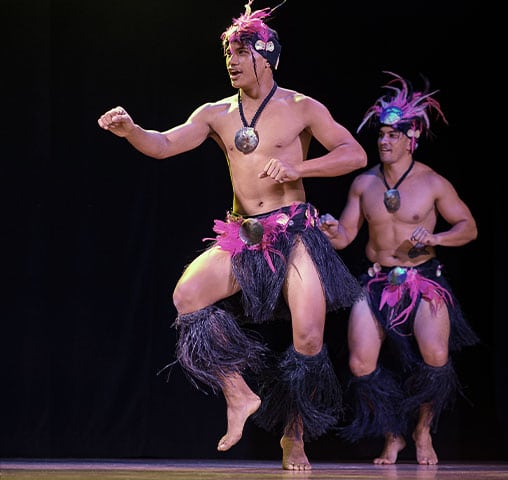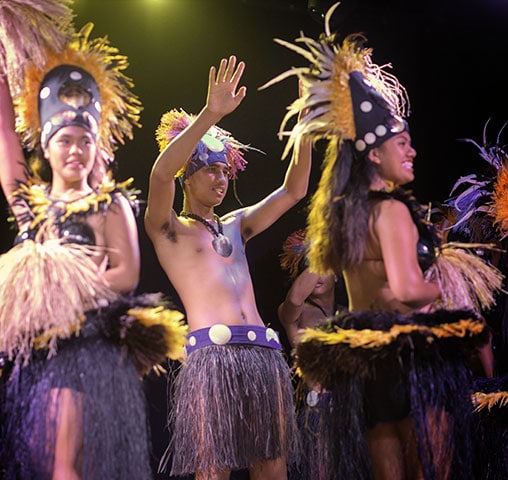Music and Dance
When and how Tahitian dance began is unclear—we only know that it began long, long ago. What is clear is that its impact on the islanders, and those lucky enough to visit the islands, is profound. It has served a variety of purposes including prayer, storytelling, hospitality, posturing, and rivalry. There was a brief hiatus during the period that the islands were colonized, but luckily the vibrant Tahitian culture prevailed and dance once again became an integral part of the culture.
While it may look easy, the graceful footwork and swaying hips of traditional Tahitian Dance, or Ori Tahiti, takes years of dedicated practice. The four types of Tahitian dance are:
ōte’a—Formerly performed only by men, women now also participate in this dance. It is the most famous of the Tahitian dances, and is characterized by fast moving hips and elegant arm gestures. ōte’a is accompanied by fast, rhythmic drums.
aparima—Usually performed while kneeling, Tahitians use their hands to tell the history of their people. The dance is either performed in silence with drumming, or in time to chanting and stringed instruments.
hivinau—Tahitians wind around in a circle while a male soloist sings a phrase that a choir takes up, accompanied with drums.
pa'o'a—Tahitian men and women crouch in a semi-circle and perform movements that recall the process for making tapa cloth, while a male singer leads others in song. A couple arises and performs a short dance within the semi-circle to the sound of “hi. hi. hi.” and “ha. ha. ha.”
It'S All In The Hips — One, Two, Three
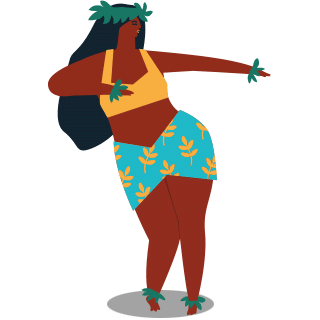
Left Hip
Push out to the front and swing
it around to the back
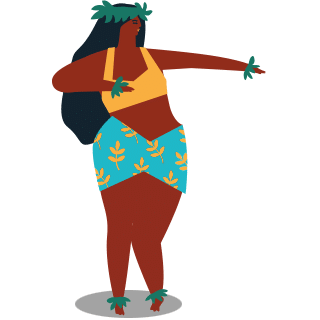
Right Hip
Push out to the front and swing
it around to the back
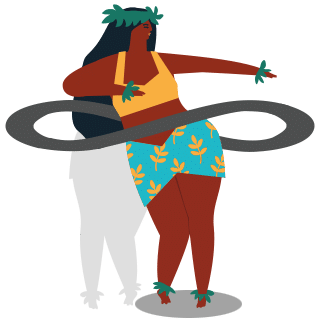
Figure 8
Continue to make this figure 8
movement
Les Gauguines
As you set sail in the South Seas on The Gauguin, Paul Gauguin Cruises’ own troupe of Tahitian hosts and entertainers known as Les Gauguins and Les Gauguines are there to share the ancestral arts of their people. Retelling epic Tahitian legends and stories through dance, song and cultural activities, they bring the colorful history of their islands to life while you enjoy your time on board.
The Importance Of Dress
Polynesian dance costumes are often as captivating as the dance itself. Depending on the dance and the occasion, the garments worn can range from hip-hugging pareos to ankle-grazing grass skirts. During the annual dance celebration and competition, Heiva i Tahiti, the dress is extravagant, colorful, and glamorous, showcasing headdresses covered in fresh flowers and grass skirts dyed in brilliant, sun-saturated shades.
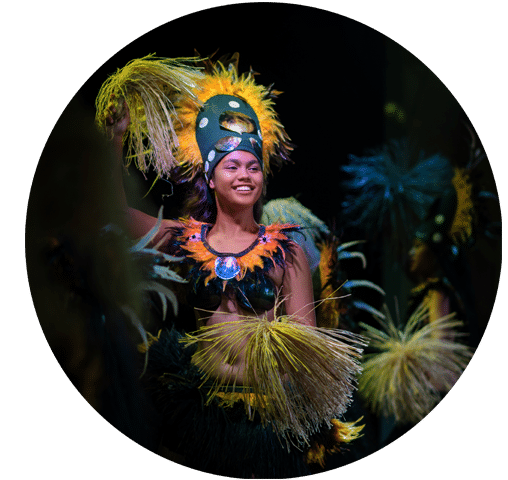
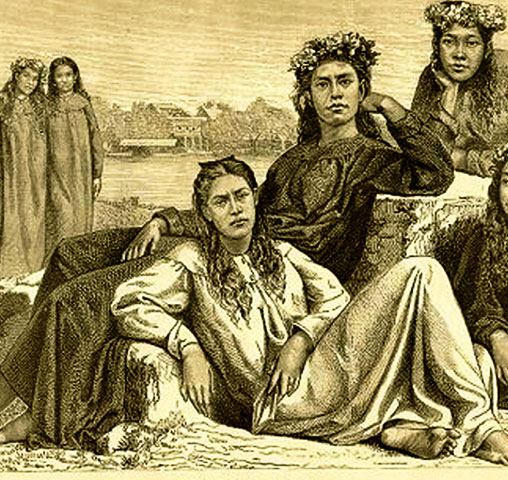
A Very Indecent Dance
Finding the traditional dance of the islands to be “inappropriate” and “misaligned” with Christianity, the English settlers of the early 19th century banned traditional dance in 1820 after the islands were colonized. In the 1950s, an impassioned teacher created a dance group, and the art of the Ori Tahiti found its way back into the hearts of islanders. It brought with it a rise in tourism, and the annual, beloved Heiva festival, which happens each July.
Madeleine Moua — The Queen Of The Heiva
A leading force in the revival of traditional dance, introduced the first Ori Tahiti dance group called Heiva Tahiti in 1956. Carefully considering every aspect of the dance, from costume choice, body language, and movement, she is credited for changing the public’s opinion on traditional dance. She is also adored for her gorgeous costume work and the creation of the iconic coconut bra, or tapea titi. Keeping up with the traditions Moua put in place, her mentee, Gilles Hollande, continued her work by educating the French people on the Ori Tahiti and collaborating with French music producers to record and spread the music of French Polynesia.
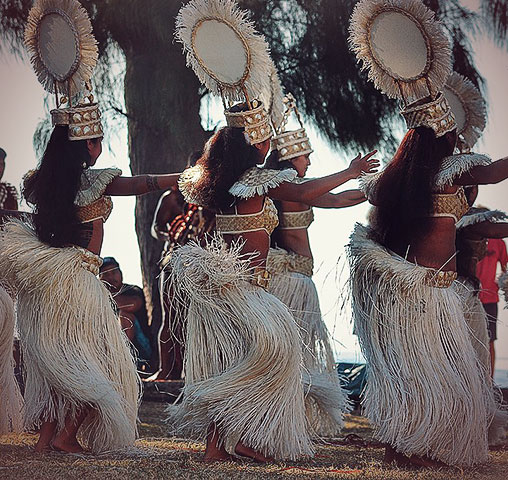
Tahitian Drums
Any trip to the South Seas wouldn’t feel complete without attending a live show; and with every strike of a drum, you can feel the passion and soul that goes into every performance. A drum circle is comprised of a variety of drums, and each plays an important part in creating the tempo of the accompanying dance.
tari parau, or tamau—A large bass drum that features two membranes, allowing the player to strike it from either side. It’s generally tilted to an angle and played with a single mallet.
fa’atete—A smaller drum often crafted from coconut wood with sharkskin or cowhide stretched atop. Played with drumsticks, it has a much higher-pitched sound than the Tari Parau.
to’ere, or pate—The most challenging drum to play, it’s crafted entirely from native wood—particularly from the miro tree—and features a slit down the side. When struck with its long, cone-shaped stick, it gives the hollow, high-pitched sound that’s often associated with Heiva.
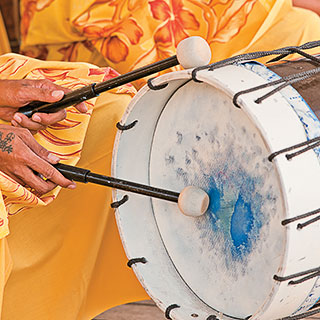
Tari Parau
Bass low, pulsing
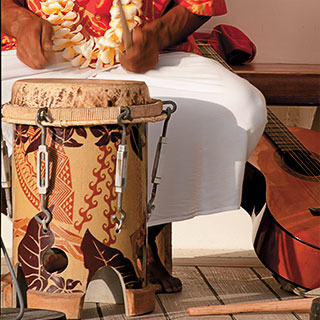
Fa'atete
High tom sound
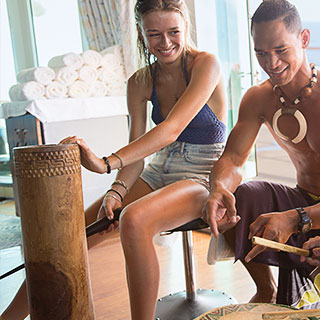
To'ere
Hollow, high-pitched
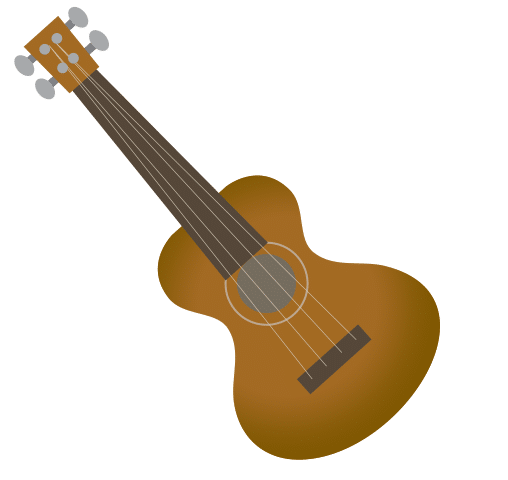
Ukulele
With a string-lined neck and a small, wooden body, the ukulele is believed to be an adaptation of the Portuguese cavaquinho—a small, guitar-like instrument first introduced to the Hawaiian island of Honolulu in 1879. Becoming quickly popular because of its melodic, cheerful sound, the Polynesian people added four more strings for a total of eight. Traditionally crafted from a single piece of wood, ukuleles are usually intricately carved, creating an instrument that is as unique as the player. Popularized for its lightweight design, it’s common to hear and see the ukulele throughout the islands.
Dance Troupes
Local dance troupes often board The Gauguin to share their craft with guests in vibrant dance shows in the Marquesas, Cook and Society Islands. If your trip to the South Seas occurs in July, it may align with the annual Heiva i Tahiti, which celebrates Tahitian dance, art, and sports—and you might encounter festivities on shore.
Modern Tahitian Music

Combining traditional, rhythmic drum beats with rock, pop, and reggae elements, modern Polynesian music has a lot to offer. Angelo released his first album in 1984, and focuses on themes of love, brotherhood and protection of the environment. Three Laughlin siblings—Tapuaril, Sabrina and Grace—have found local fame with their individual musical styles. Whether you opt for feel-good easy listening, or crave a bit of rock n’ roll, check the local stations (or go see a live performance) for a Polynesian take on your favorite genre.
